In Western folklore, Jack Frost was a character who appeared in the icy and cold weather. That's why i say that Autumn Crocus ( Zephyranthes candida ) tells you the cold weather is on it's way, it flowers in Autumn. This little plant grows from a bulb, has thin shiny green leaves, and white flowers with yellow stamens in the centre. In a few years , the bulbs will multiply and form clumps, which can be divided to get more plants. Other varieties of Crocus come in many different colours. Another type of Crocus is used for flavouring and colouring food, it is Saffron, which is more expensive to purchase by weight than Gold.
Autumn Crocus is best planted in the Semi-shade areas of the garden, as it will burn off in the hot sun and won't look its best. It is not fussy about the soil where it grows, and it is known for flowering profusely after rain storms. The plants in this photo were taken locally here in the Galapagos Islands where i live :) ....Awww really , do i have to say it AGAIN ?

Another wonderful and interesting flower post by @ctrl-alt-nwo sir...
Zephyranthes candida, with common names that include autumn zephyrlily,white windflower and Peruvian swamp lily,is a species of rain lily native to South America including Argentina, Uruguay, Paraguay, and Brazil. The species is widely cultivated as an ornamental and reportedly naturalized in many places (South Africa, the Indian subcontinent, Zimbabwe, Seychelles, central and southern China, Korea, Nansei-shoto (Ryukyu Islands), Bhutan, Solomon Islands, Queensland, Nauru, Tonga, Society Islands, Mariana Islands, southeastern United States (from Texas to North Carolina), the Lesser Antilles, and Peru).
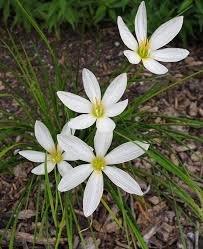.jpeg)
Scientific classification...
Leaves are a deep glossy green and measure 3 mm wide. Flowers, which bud late in August (when propagated in the Northern Hemisphere) at first resemble a new leaf, but emerge from their papery sheaves to a stunning whiteness; they are erect in perianth white and sometimes pinkish abaxially. The leaf-like bract is 1.8 to 4 cm. They grow best in full sun to part shade and require a medium wet soil. Propagation is done by dividing bulbs or offsets and from seed.
Zephyranthes candida was first described by John Lindley in 1823 as Amaryllis candida.It was transferred to its current genus in 1826 by William Herbert.Other common names of Zephyranthes candida include August rain lily, white zephyr lily, white fairy lily, white rain lily, and autumn zephyr lily.
@ctrl-alt-nwo sir...Thanks for sharing this amazing post....
Accurate description and pics featuring the correct plant, i'm impressed. You get the Fav comment award, well done!
Autumn Crocus
Zephyranthes candida
This tough little bulb flowers in profusion after rain – hence its sometime alias, the storm lily. It has shiny evergreen foliage and the flowers are white and open, like fragile crocuses. zephyranthes will grow in most regions in sun or semi-shade. Protect it from the hot sun in warm climates. It is not fussy about soil, even coping with poorly drained clay soils. It’s a little gem for containers (where a watering can may imitate rain, giving plenty of flowers) and it makes a delightful border in both formal and informal designs.
These 'storm lilies' (Zephyranthes candida, ht 15-25cm) come from Argentina and have grassy foliage and flowers rather like a crocus, and are easily grown in Sydney. In fact they are the only crocus-looking bulb most of us can grow, as generally Sydney's climate is too mild for real crocuses, which belong to the Iridaceae family of plants. Zephyranthes candida comes from the Amaryllidaceae family of bulbs, which on the whole do very well in our region.
They have papery white or (more rarely) pastel pink flowers, with thin evergreen foliage. They seem to come into bloom after rain has fallen, hence their common name, and several flushes of flowers can be expected if there a few periods of rain in late summer and autumn. They may even flower earlier in summer if there is a lot of rain. They form thick clumps and can survive in quite dry positions, such as at the base of a hedge, but will also cope with more moist positions. It is best if they dry out in late summer as the time approaches for their flowering period. They can be fertilised whenever you are doing the rest of your garden. They can be grown in a pot and do best with plenty of sun. Watch out for snails and slugs, which can wreck the flowers.
It goes by the various common names of zephyranthes, rain lily, autumn crocus or windflower. I had a friend who called it birthday flower as it always bloomed on her birthday. It has small, white, crocus-like flowers set amid a mass of dark green tubular leaves. It grows about 20cm high and flowers after rain (hence the name rain lily) in late summer and has flushes of flowers during autumn (which is why it is also known as autumn crocus).
It grows from a bulb or can be bought in pots at the nursery. Zephyranthes (which suggests the wind and the other common name of windflower) does best in a sunny spot in well-drained soil and can be grown as a border plant or in clumps to give interest to the garden in summer and autumn. It naturalises readily and, in parts of Queensland, it is even considered a bit of a weed.
src
The common names that include autumn zephyr lily, white windflower, and Peruvian swamp lily, Rain/Fairy Lily. Crocus like white flowers summer.
The leaves are a deep glossy green and the flowers at first resemble a new leaf. This is a bulb with evergreen, rush-like foliage. They grow best in full sun to part shade and require a medium wet soil.
The propagation is done by dividing bulbs or offsets and from seed.
In the late summer and fall, white tubular flowers with six petals and yellow stamens
The name Zephyranthes means ‘flower of the west wind’. The flowers are symmetrical and point straight up. The related Habranthus genus , also widely grown, have similar flowers which hang to one side. Each flower generally lasts for one to two days.
Autumn crocus (botanical name Colchicum autumnale) is a perennial flowering herb belonging to genus Colchicum and grows up to a height of about a foot (30 cm). This herb bears deep green leaves whose shape resembles tulips. The leaves emerge from a corm - a plump, tuberous base. The flowers of autumn crocus are pale purple or white in color.
This tough little bulb flowers in profusion after rain – hence its sometime alias, the storm lily. It has shiny evergreen foliage and the flowers are white and open, like fragile crocuses.
Cultivation: zephyranthes will grow in most regions in sun or semi-shade. Protect it from the hot sun in warm climates. It is not fussy about soil, even coping with poorly drained clay soils. It’s a little gem for containers (where a watering can may imitate rain, giving plenty of flowers) and it makes a delightful border in both formal and informal designs.
The leaf tips can brown off in hot dry weather. Some people grow it as a border in place of mondo grass.
This plant has grass-like, narrow evergreen foliage and produces white flowers rather like a crocus which come into bloom after rain has fallen. Flowers appear from autumn through to end of summer. Looks great as a border, in front of tall plants, mass planted or scattered throughout the garden.
Thanks for reading @ctrl-alt-nwo
The Zephyranthes genus has about 70 species. Flowers of these species vary from pink to copper, yellow, cream and lavender.
Zephyranthes candida has flowers that resemble the temperate Crocus species.
To grow in the best conditions, they need a full sun to light shade,well-drained soil, water regularly for maximum bulb development, good fertile soil for optimal growth.
Zephryanthes candida flowers appear from Summer through to early Autumn, often following rain periods.
They grow best in full sun to part shade with protection from afternoon sun desirable.
The soil should be rich and free-draining but moisture retentive.
For preparing the site, dig over the soil and add a handful of rich compost or well-decayed animal manure. They need water regularly but do not overwater. Suitable for planting in drifts or as a border in gardens.
Hi dear and respectable @ctrl-alt-nwo
I am very happy to see post of my respectable and generous mentor. Your kind guide gives me inspiration and confidence . You spreading the true nature which is much interesting and also good source of learning for me .
If you truely love in nature, you will find the beauty everywhere.
Vinecent van Gogh.
Crocus is a genus of flowering plants in the iris family consisting of 90 species of perennials rising from corms. Some are cultivated for their flowers appearing in autumn, winter, or spring. Crocuses are neighbours to woodland and meadows from sea level to alpine tundra in central and southern Europe, North Africa .
Autumn crocus is a plant and its seed, bulb, and flower are used to make medicine. Colchicum autumnale, generally known as autumn crocus, naked ladies or meadow saffron is an autumn-blooming flowering plant that resembles the true crocuses.
Source
I am not a good writer but I am learning under your kind supervision and feeling improvement in my writing and thinking style. Moreover I was not much interested in nature but your nice blogs have changed my life now I often visited the parks and nurseries and get very fresh and good feeling in my personality, this credit goes to you my dear mentor.
I hope you will like my little words and this act will give me good feeling and one more step to success and confidence.
Thanks for sharing informative blog with awesome picture with beautiful secenry.
Stay blessed.
Other Names: Colchicum, Colchicum autumnale, Colchicum speciosum, Colchicum vernum, Colchique, Colchique d'Automne, Cólquico, Crocus, Dame Sans Chemise, Fall Crocus, Faux-Safran, Meadow Saffran, Meadow Saffron, Mysteria
Position: full sun
Soil: gritty, poor to moderately fertile, well-drained soil
Rate of growth: fast-growing
Flowering period: September to November
Hardiness: fully hardy
Bulb size:5/7
Beautiful, bluish-violet, goblet-shaped flowers with deep blue veins from September to November, followed by narrow, mid-green leaves. This popular autumn-flowering crocus is ideal for naturalising in a sunny shrub border among deciduous shrubs. Often the earliest autumn crocus to bloom, it soon increases to form large colonies.
Garden care: Plant bulbs in naturalistic drifts 10cm (4in) deep in July or August in gritty, well-drained soil. Where bulbs are planted in grass do not cut the lawn until after the leaves have died back.
Be careful of those Common names, one plant can have 2 or 3 common names or more. Always use the Botanical name to see the exact plant you want.
Do you want plant Autumn Crocus? Let's do it!
Work in organic matter such as compost, peat or a substitute, such as shredded leaves to a depth of at least 10 inches.
source
Saffron.. It is the most interesting plant I have ever heard.
Saffron is the most expensive spice in the world! It is produced from the saffron crocus flower (Crocus sativus). It is actually the dried stigmas (which are the insides of a flower that catch pollen) and has a deep auburn colour and sweet flavour. The stigmas can only be picked by hand as machines are not delicate enough. It takes 250,000 stigmas to make just half a kilo of saffron, hence its high price, however you only need a pinch as it is very strong.
The Crocus flower is native to Southwest Asia and some areas of Europe. Though it is often harvested to be used as a spice for cooking or for flavoring tea, it is also known to have many health benefits as an herbal supplement. Saffron has lost some of its popularity as a spice due to more common and affordable herbs and spices, yet it still remains as a herbal supplement because of its many medicinal benefits.
Many people do not know the numerous health benefits that can be gained from using a saffron herbal supplement. The amount of ailments it be used to treat is extensive. Below is a list of some of the more common ailments that an herbal saffron supplement can help with.
You can learn more by reading this article.
images from google.
Autumn crocus, Zephyranthes candida
This tough little bulb flowers in profusion after rain – hence its sometime alias, the storm lily. It has shiny evergreen foliage and the flowers are white and open, like fragile crocuses.
Description: It has shiny thin, dark-green, evergreen foliage and the flowers are white and open, like fragile crocuses.
Size: up to 20cm tall. Bulbs multiply rapidly to form a clump.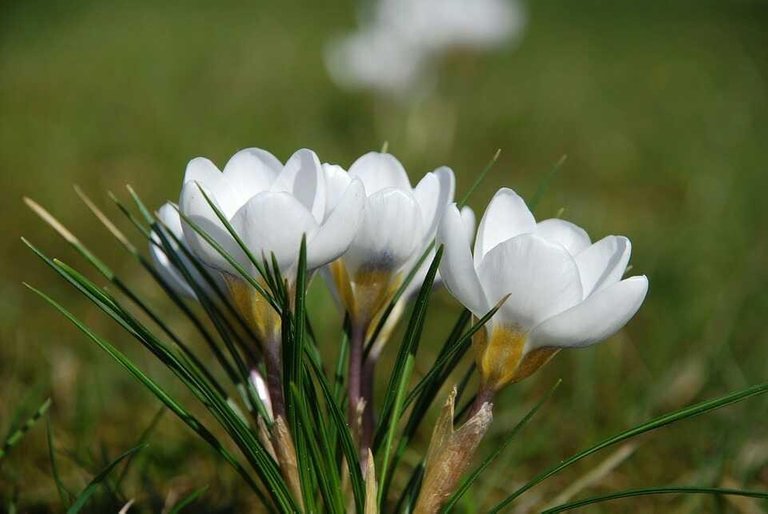
Cultivation: zephyranthes will grow in most regions in sun or semi-shade. Protect it from the hot sun in warm climates. It is not fussy about soil, even coping with poorly drained clay soils. It’s a little gem for containers (where a watering can may imitate rain, giving plenty of flowers) and it makes a delightful border in both formal and informal designs.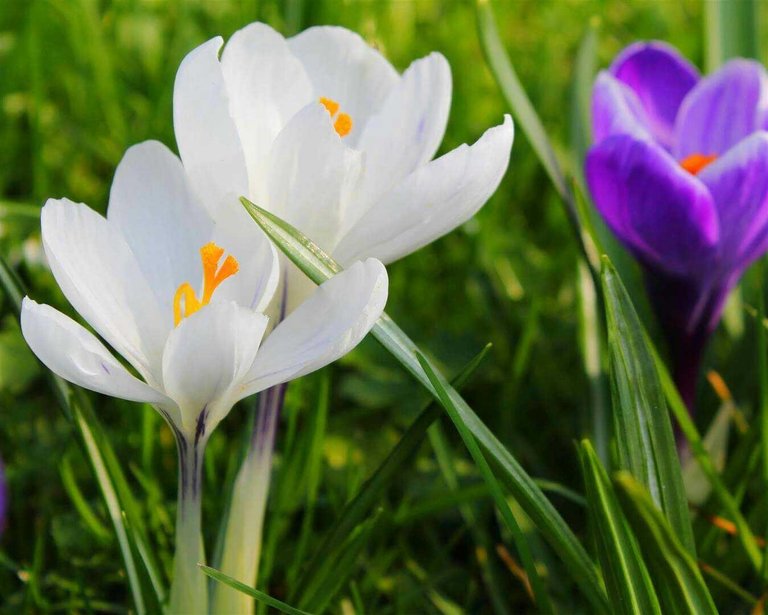
Special comments: the leaf tips can brown off in hot dry weather. Some people grow it as a border in place of mondo grass.
This is very new to me and i liked the flower very much,let me see what i can present to you about the flower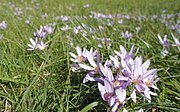
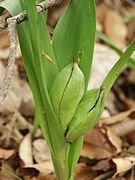 Thank's for the post.I am looking for your next post.@upvoted and resteemedAll the information taken from wiki.
Thank's for the post.I am looking for your next post.@upvoted and resteemedAll the information taken from wiki.
Colchicum autumnale, commonly known as autumn crocus, meadow saffron[3] or naked ladies,[4] is an autumn-blooming flowering plant that resembles the true crocuses, but is a member of the Colchicaceae plant family, unlike the true crocuses which belong to the Iridaceae family. The name "naked ladies" comes from the fact that the flowers emerge from the ground long after the leaves have died back.[5] Despite the vernacular name of "meadow saffron", this plant is not the source of saffron, which is obtained from the saffron crocus, Crocus sativus – and that plant too is sometimes called "autumn crocus".
It is a perennial herb with leaves up to 25 cm (10 in) long. The flowers are solitary, 4–7 cm (2–3 in) across, with six tepals and six stamens. The ovary is below ground
Colchicum autumnale is the only species of its family native to the Great Britain and Ireland,[9][8] with notable populations under the stewardship of the County Wildlife Trusts. It also occurs across mainland Europe from Portugal to Ukraine, and is reportedly naturalized in Denmark, Sweden, European Russia, the Baltic states and New Zealand.
The bulb-like corms of Colchicum autumnale contain colchicine, a useful drug with a narrow therapeutic index. Colchicine is approved by the US FDA for the treatment of gout and familial Mediterranean fever. Colchicine is also used in plant breeding to produce polyploid strains.
Colchicum plants are deadly poisonous due to their colchicine content, and have been mistaken by foragers for ramsons, which they vaguely resemble. The symptoms of colchicine poisoning resemble those of arsenic, and no antidote is known.
I am not a professional photographer, but some of my photos are OK.
Thanks for your reply.Reply from a big shot of your caliber encourages new comer like me a lot.Thank's from deep end of my heart.
Growing the flower of the submerged flower in the pot: You have to plant the onions in the same pot with 2 cm spacing, with the ends remaining outside the soil. The bigger the pot, the more the onion. Continuous foliage all year
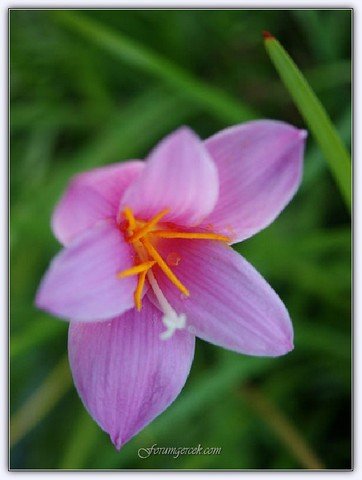
it remains green.
Once a year you have to separate the growing number of growing bulbs again. If you want it, dry it with thirst and then do it so that you do not wander the leaves with your hand. The first thing to do when you stitch and swim is to bloom. Season does not matter
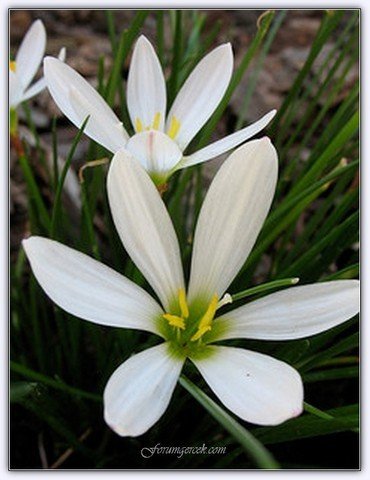
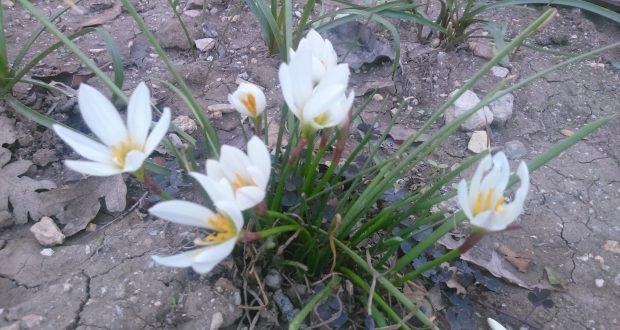
If you are growing in front of a sunny window in the house, whenever new leaves are very developed and old, leave them thirsty. When the leaves dry, the first thing to do is start to bloom again.
growth stages as follows
( )
)
(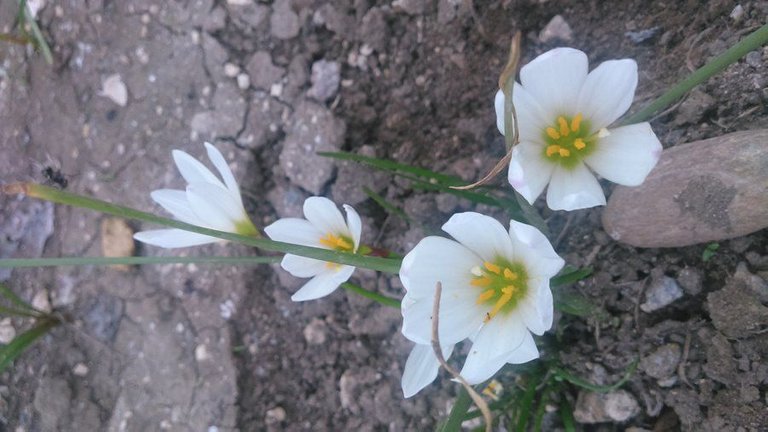 )
)
@ctrl-alt-nwo, That's very beautiful flowers indeed awesome little plant. You given best information about Autumn Crocus. I have to add someone via web browsing. The autumn crocus or meadow saffron is a member of the lily family (Liliaceae), not to be confused with its look alike, the spring-flowering crocus, which is a member of the Iris family (Iridaceae). Hailing from Europe, North Africa and Asia, the autumn crocus is one species of around 70 in the genus Colchicum. This Colchicum has a rather unusual life cycle in that the colorful flowers appear as its name suggests, in early autumn. All parts of autumn crocus plants are toxic with resulting symptoms from ingestion similar to those of arsenic poisoning. These symptoms occur within two to five hours due to the alkaloid colchicines contained in the autumn crocus bulbs.
The autumn crocus has a long history as a poison. Greek slaves were known to have eaten the plant to make them sick, and even to commit suicide. Besides its use as a poison, autumn crocus bulbs have long been utilized for medicinal purposes as well.
Of course, when growing autumn crocus in the garden, its medicinal properties are not favored but rather the delightful blooms. The colorful blooms of the autumn crocus initially spring from the earth without any accompanying foliage. Short lasting, they fade within two or three weeks, and then lies dormant until the following spring, at which time three to eight, 1 foot leaves appear and remain until early summer. In September, the autumn crocus emerges from its hibernation to bloom once again in a profusion of clustering flowers. Thank you for reading!!!!
Source: Google
That would be perfect explanation about Autumn Crocus plant. Beautiful flower and leaves has there. Multi coloring flowers has.
Scientific Name(s): Colchicum autumnale L. Other species used medicinally have included Colchicum speciosum Steven and Bulbocodium vernum L. Ker-Gawl. Family: Liliaceae (lilies)
Common Name(s): Crocus , autumn crocus , fall crocus , meadow saffron , mysteria , naked lady , vellorita , wonder bulb
Autumn crocus often is planted just before it blooms. In fact, it can even be planted while in full bloom. The large bulb-like corms the plant produces contains sufficient nutrients and water to complete the flowering process without being in soil. At times in the past, gardeners would purchase the corms and allow them to flower indoors and then plant them in the garden. This practice, however, did result in some drying of the corm while indoors resulting in flowers that did not last very long after being planted outdoors.The leaves of autumn crocus are produced in the fall of the year, after flowering has occurred. However, they do not make significant growth until the following spring. By late spring, the strap-like leaves which are about 12 inches long and one inch wide, wither and die. No further above-ground evidence of the plant exists until its flowers appear in September.
There are several varieties of autumn crocus available. ‘Lilac Wonder’ and ‘The Giant’ are two of the most spectacular because of their large flower size. Flower color is violet-mauve and rosy-lilac, respectively. ‘Waterlily’ is a double-flowered pink variety also available. Although not as large as the previously-mentioned varieties, it is quite attractive.
I found details from Internet....
Common Name:
Autumn crocus, meadow saffron
Botanic Name:
Colchicum autumnale
Plant Family:
Liliaceae
Habitat:
Garden or indoor potted plant
Distribution
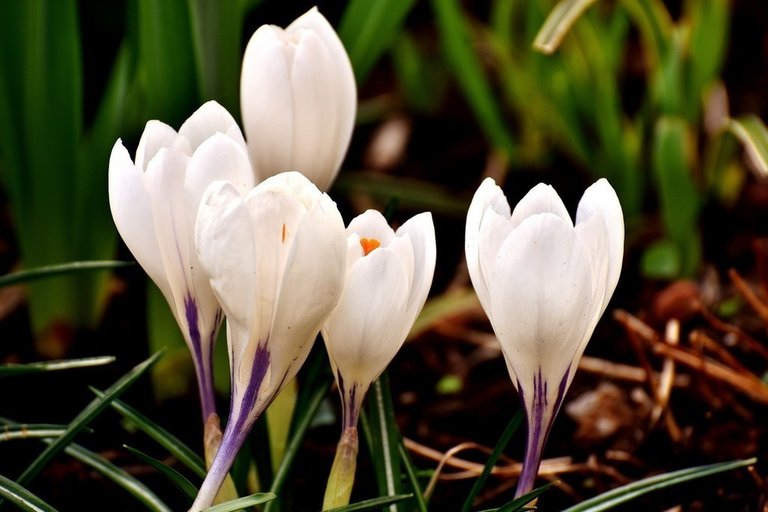
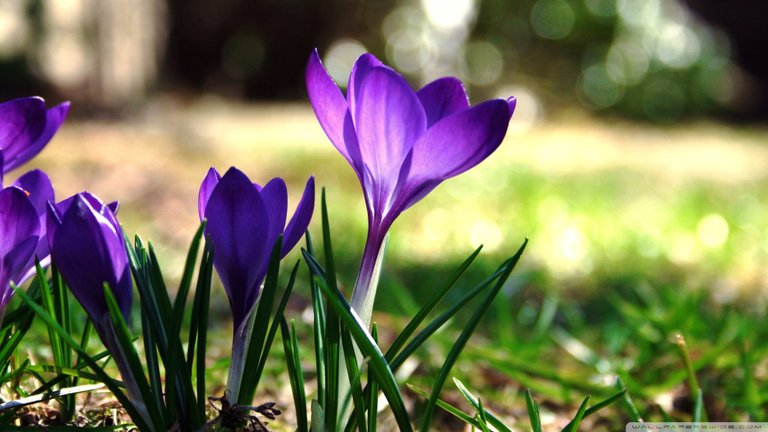
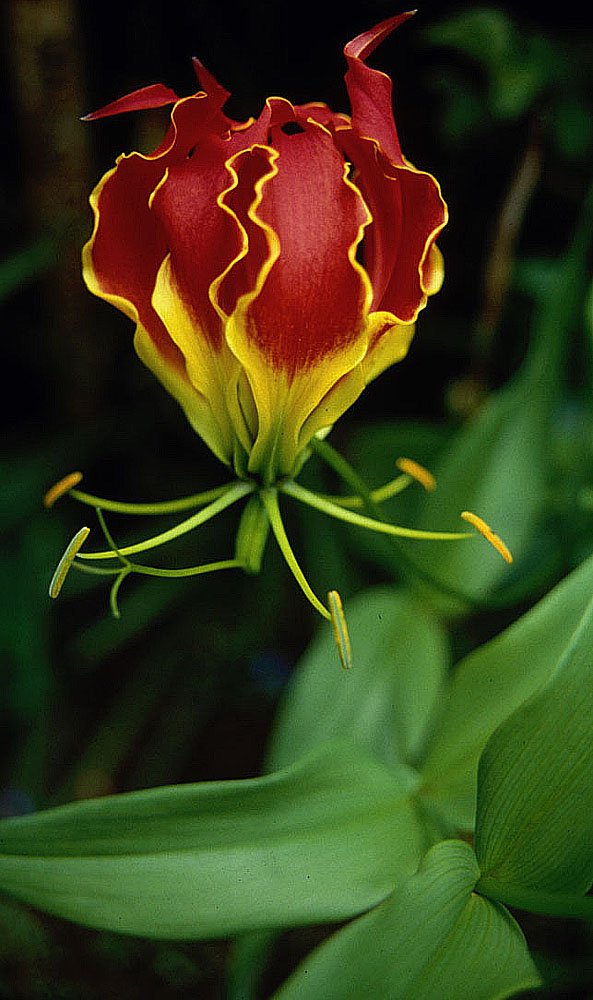
Introduced from the Mediterranean area and Asia
Animals Affected
All animals, and humans are susceptible to poisoning
Autumn crocus (Colchicum autumnale)
Toxic Principle
All parts of autumn crocuses are poisonous, the greatest concentrations of toxic alkaloids occurring in the flowers and seeds. The corm is also toxic containing 0.05% alkaloids, in contrast to 0.2% in the seeds. However, the corms are large enough to contain toxic doses of the alkaloids. The primary toxic alkaloid is colchicine, which interferes with cell mitosis. Colchicine and its related alkaloids interfere with microtubular dependent cell function's by binding to tubulin protein, thus blocking mitosis in multiple tissues.1 All animals are susceptible to the toxic effects of colchicine. Multiple organ failure is characteristic of acute colchicine poisoning. Colchicine also causes marked decreases in prolactin, insulin, glucose tolerance, and catecholamine production. An estimated lethal dose of colchicine is 0.8 mg per kilogram body weight. Another plant that is known to contain colchicine and similar alkaloids is the Glory Lilly (Gloriosa superba) which contains up to 0.36% colchicine in its tubers.
Description;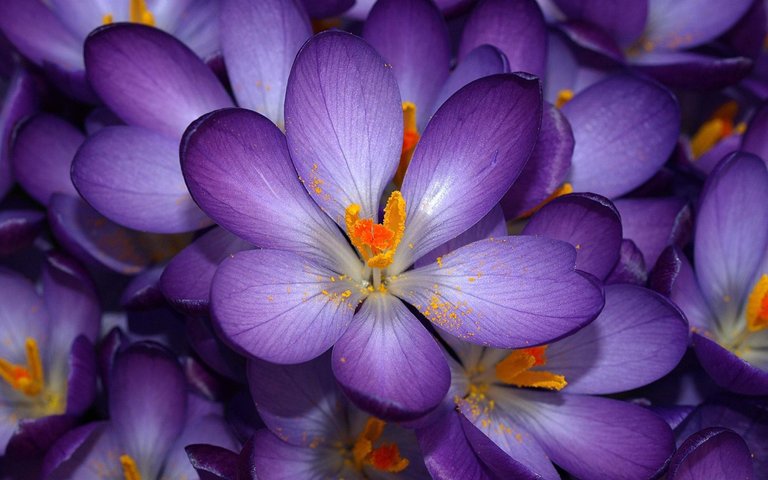
Comprising the genus of some 60 species originating in Europe and North America and West and Central Asia. Many species originate from the Mediterranean area around Turkey and the Balkans. Arising from corms no ground, almost all species produce flowers before they do believe this. The leaves are basal, lon,' linear blades. Flowers are produced singularly or clusters atop long tubes and are generally purple, pink, or white in color. In contrast to Crocus species, which have 3 stamens, Colchicum flowers each have 6 stamens and three pistils. Many species tend to flower in the fall, but others may flower in the spring
Red gold or saffron, which is a national treasure in some countries, was ranked by 16 experts in terms of the most expensive materials, to come after gold directly, where the price of one gram US $ 11, has jumped the price of saffron globally in recent years for several reasons, The United States imported it from Iran, and this plant is expensive to grow physically and technically, so its price is expensive, especially the species of luxury, and for example, half a kilogram of saffron, it requires the cultivation of at least 75 thousand flowers, and drying it loses a lot of His weight, twenty-five kilos, is now over To dry almost five kilograms only, and in each flower about three of the saffron threads the most expensive types of spice in the world, and blooms saffron at night, and gather at dawn so as not to lose color in the light of the sun, saffron takes thin and thin lines of orange red and the more The color of saffron was red, it was of high quality.
Iran, Spain, India, Greece and Morocco are among the most prolific producers of saffron, but Iran remains the world's largest exporter of unalloyed saffron. The years 2006, 2007 and 2008 have witnessed a decline in saffron exports and a decline in Iran's share. Spain has gradually reduced its production of saffron in 15 years The United States is followed by the Gulf States, the largest importer, and European companies control a large part of the global trade of saffron, where they know well how to handle and fill, enabling them to control 80 to 90 percent of world trade.
What is saffron?
Saffron is a bulbous plant belonging to the genus Saffron of the Susannian family, the active part of the saffron members of the pollination called the features, and take away from the open flowers, and dried in the shade, and then on the net thin or thin on a low heat, and this material is red orange, and the smell of pungent and taste Distinctive, and kept in a timely manner so as not to lose value as a valuable material.
Saffron cultivation dates back more than 3,000 years. Experts believe that there are documents about saffron dating back to the seventh century BC. Saffron has been used in perfumery and medicine for over 3000 years, the most expensive spice in the world.
Men's Sexy Corset
In the context of the search for natural resources to increase sexual capacity in humans, two Canadian researchers suggested adding spices such as saffron and ginseng to the diet. Professor Massimo Marconi of the Department of Food Science at the University of Guelph and doctoral student John Melnik sought to audit hundreds of studies on erotic foods , In order to ascertain the allegations of her role in improving sexual abilities psychologically and physically, and found in the review published in the Journal of International Food Research that saffron, ginseng and natural yohimbin improve sexual performance in men. Melnik said in a statement that he is currently dealing with erectile dysfunction problems with drugs such as Viagra and others, but these drugs can cause headaches, muscle pain, and adversely affect the eyesight.
Medical Pharmacy
Among the benefits of saffron is that it is anti-convulsive and brings pleasure to the heart of the drink, a stimulant of nerves, has been used since ancient times in the treatment of many diseases, such as intestinal flu, and reduce gastric gases and disorders, and treatment of pertussis and colds. Saffron is also used in some modern pharmaceutical industry, such as those used to expel intestinal worms, sedative drugs for neurological and psychiatric conditions, drugs used to stimulate urinary secretions, as well as some drugs used to stimulate the heart. Saffron is believed to affect symptoms of depression by affecting the chemical sert Brain.
Saffron treats cancer
Scientists believe that the saffron has the ability to resist cancer, prolong the patient's life expectancy, and use it in a medical way with the black bean, reduces the incidence of the tumor by a certain percentage. The therapeutic materials contribute to saffron, especially heroin and peccrocerin. The chromosome has a dose-dependent inhibitory effect in the synthesis of DNA and RNA in the separated nucleus. Other references mention that the plant is useful in reducing cancers of the abdomen, bladder, breast, colon, diaphragm, ear, eye, kidney, throat, liver, mouth, neck, spleen, stomach, lobe and uterus. , Leukemia, lymphoma, and various skin tumors.
The perennial Autumn Crocus (Colchicum autumnale), one of around a hundred species in the genus Colchicum, is is one of the most widespread species in the genus and the only one found as far north as northern Europe and Great Britain. Its distribution is limited to Europe, but within Europe it is very broadly (although not continuously) distributed. Autumn Crocuses are generally found in periodically wet to moderately moist grassland, but occur also in alluvial forests item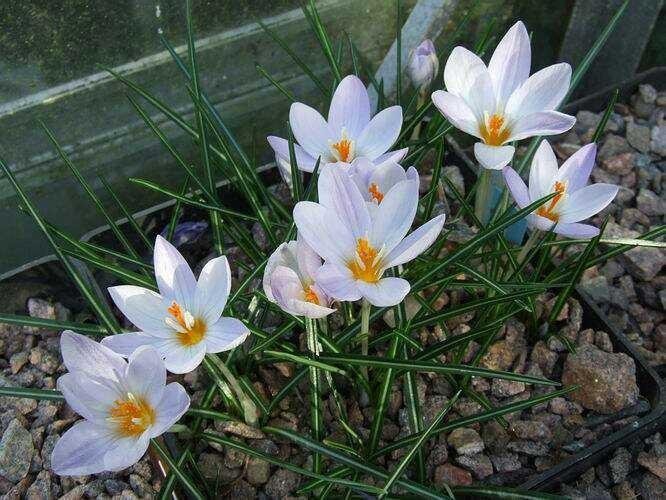
The flowers and leaves of the Autumn Crocus appear at different times. Flowers appear in the fall and may be present into the winter; leaves appear in the spring and may be present into mid-summer.
Autumn Crocus is perhaps best known as the source of the highly toxic alkaloid colchicine (colchicine has some limited medical applications, but must be used with great care). Although livestock generally avoid this plant, occasional poisoning occurs in cattle, horses, sheep, and pigs, sometimes leading to death. Colchicine has also long been used by plant breeders to generate mutations, a few of which may result in desirable traits, notably polyploidy. The late flowering time and attractive flowers make the Autumn Crocus a popular ornamental plant.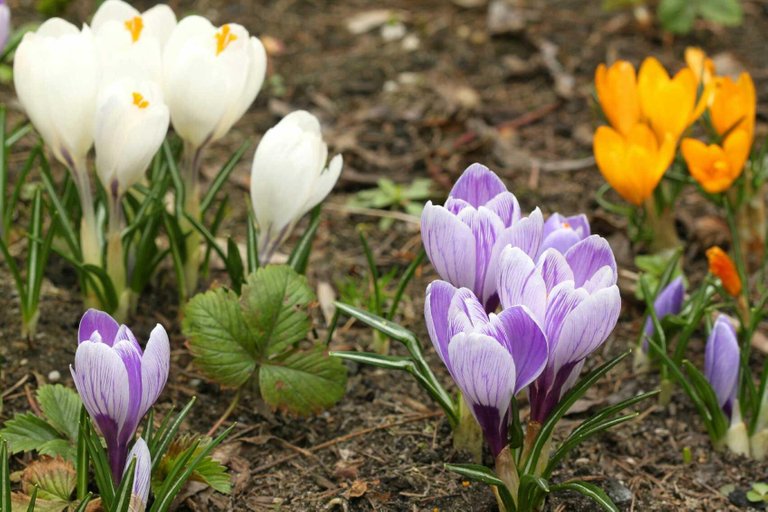
Jung et al. (2011) provide a thorough review of the biology of the Autumn Crocus, including its taxonomy, morphology, geographic and ecological distribution, reproductive biology, ecology, and physiology.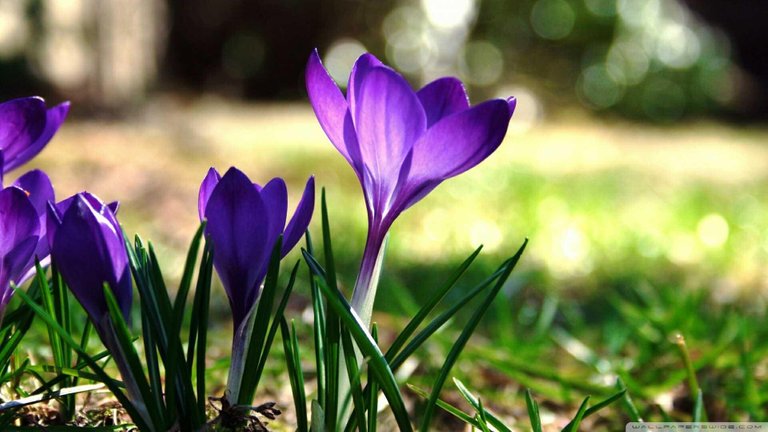
The Autumn Crocus is not threatened in the central portion of its distribution, although it is a species of concern in some countries at the periphery of its range. source
source
I love the crocus flowers between these grasses. I want to try this method. Are you a photographer? I wish I had a mind last year ...
I am not a pro. photographer, but sometimes i do OK.
Hi,Dear sir @ctrl-alt-nwo.This is my first comment on your post.Please take a look on my entry.Here is some information about AUTUMN CROCUS.
About Autumn Crocus:
Colchicum autumnale, commonly known as autumn crocus, meadow saffron or naked ladies, is an autumn-blooming flowering plant that resembles the true crocuses, but is a member of the Colchicaceae plant family, unlike the true crocuses which belong to the Iridaceae family. The name "naked ladies" comes from the fact that the flowers emerge from the ground long after the leaves have died back. Despite the vernacular name of "meadow saffron", this plant is not the source of saffron, which is obtained from the saffron crocus, Crocus sativus – and that plant too is sometimes called "autumn crocus".
These pictures are taken from google and the text from wikipedia.
Zephyranthes candida is also known as the white storm lily as it often flowers after Summer storms. They originate in Southern Argentina, Paraguay and Uruguay. They have become a very popular addition to gardens across Australia. They are becoming increasingly popular for mass plantings or as a feature border. For impact plant dwarf mondo in front of a border of white flowering crocus or inter-plant them with mondo grass for impact. Agapanthus also compliment border plantings bringing depth and colour in late Summer. These crocus bulbs are supplied fresh - they will have foliage and roots (not just your average dried bulb). Plant them singularly and watch them quadruple in a year!
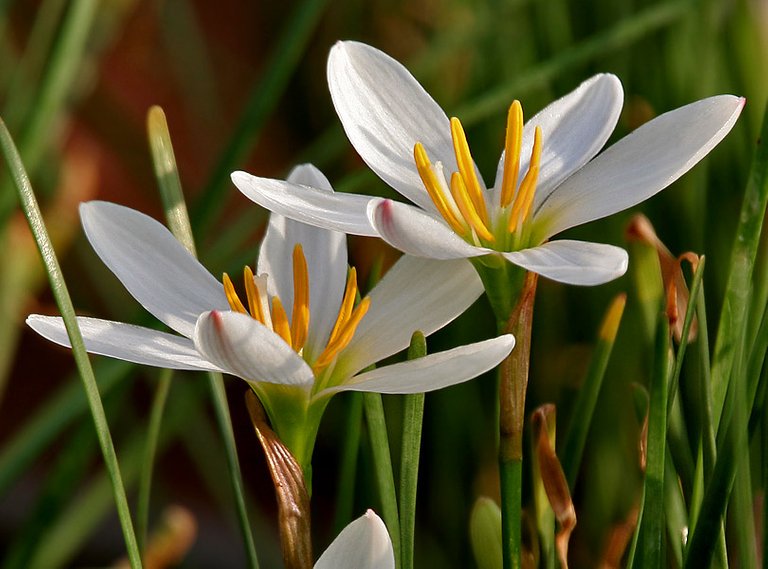
How to grow storm lilies
Storm lilies, autumn crocus or rain lilies are small bulbs in the genus Zephyranthes. These under rated plants deserve to be more widely grown in subtropical and tropical gardens. They are tough and undemanding, and soon form large clumps that flower readily over summer in response to warm and moist conditions.
Zephyranthes flavissimus has butter yellow flowers
Flowering is synchronised – that is, plants will flower simultaneously together over a wide region. The flowering seems to be stimulated by storm events, possibly triggered by changes in pressure. Flowering is often said to predict forthcoming rain events. Seed pods are produced immediately following flowering and seeds fall while the ground is still moist.
The name Zephyranthes means ‘flower of the west wind’. The flowers are symmetrical and point straight up. The related Habranthus genus , also widely grown, have similar flowers which hang to one side. Each flower generally lasts for one to two days.
These bulbous plants are native to the southern USA, down through Mexico and Central America to the south of the South American continent. They also grow in the islands of the Caribbean. Typically they are found growing in meadows and pastures among grasses. These plants grow in regions subject to seasonal rainfall and can tolerate both wet and dry periods.

These 'storm lilies' (Zephyranthes candida, ht 15-25cm) come from Argentina and have grassy foliage and flowers rather like a crocus, and are easily grown in Sydney. In fact they are the only crocus-looking bulb most of us can grow, as generally Sydney's climate is too mild for real crocuses, which belong to the Iridaceae family of plants. Zephyranthes candida comes from the Amaryllidaceae family of bulbs, which on the whole do very well in our region.
They have papery white or (more rarely) pastel pink flowers, with thin evergreen foliage. They seem to come into bloom after rain has fallen, hence their common name, and several flushes of flowers can be expected if there a few periods of rain in late summer and autumn. They may even flower earlier in summer if there is a lot of rain. They form thick clumps and can survive in quite dry positions, such as at the base of a hedge, but will also cope with more moist positions. It is best if they dry out in late summer as the time approaches for their flowering period. They can be fertilised whenever you are doing the rest of your garden. They can be grown in a pot and do best with plenty of sun. Watch out for snails and slugs, which can wreck the flowers.
Flowers in January, February, March, December.
Colchicum autumnale, commonly known as the autumn crocus or meadow saffron, contains the antimitotic colchicine, which binds to tubulin and prevents it forming microtubules that are part of the cytoskeleton in all cells.
A 71-year-old woman ate a plant she thought to be wild garlic (Allium ursinum). Ten hours later she arrived at the emergency department complaining of nausea, vomiting and watery diarrhea. Ingestion of a poisonous plant was suspected and she was treated with gastric lavage, oral activated charcoal and an infusion of normal saline. Toxicology analysis with gas chromatography and mass spectrometry revealed colchicine in the patient's gastric lavage, blood (5 microg/l) and urine (30 microg/l). She developed arrhythmias, liver failure, pancreatitis, ileus, and bone marrow suppression with pancytopenia. Alopecia began in the third week. Treatment was supportive only. Five months later she had no clinical or laboratory signs of poisoning.
The patient mistakenly ingested autumn crocus instead of wild garlic because of their great similarity. Colchicine primarily blocks mitosis in tissues with rapid cell turnover; this results in gastroenterocolitis in the first phase of colchicine poisoning, bone marrow hypoplasia with pancytopenia in the second and alopecia in the third, all of which were present in our patient. Colchicine toxicity in tissues without rapid cell turnover caused arrhythmias, acute liver failure and pancreatitis.
Colchicine poisoning can result in gastroenterocolitis followed by multi-organ dysfunction syndrome. In unexplained gastroenterocolitis after ingestion of wild plants as a salad or spice, especially when wild garlic is mentioned, we should always consider autumn crocus. Diagnosis could be confirmed only by toxicology analyses. Management of colchicine poisoning is restricted to supportive therapy.
Clade:Angiosperms
Clade:Monocots
Order:Liliales
Family:Colchicaceae
Genus:Colchicum
That's a new information also for me. Some pictures of Autumn Crocus, May anybody choose this.
All source :Google
Here is another colour of Autumn Crocus
This beautiful flowers is perfect for gardening. Thanks a lot for sharing such a exclusive post.Outstanding post...... @ctrl-alt-nwo. Autumn Crocus looking beautiful. This winter weather is good for plants. Some information about Autumn Crocus. Kingdom:Plantae
Crocus is a natural flower that grows in meadows and forests. Many varieties are produced by crossing. White, yellow, purple and striped varieties bloom in spring or autumn according to their genus. It is not selective in terms of soil. Shade trees grow from bottom to grass fields everywhere. If planted in a flowerpot, it can be taken in when it buds.
Those who open in the autumn are laid in June, those who open in the spring are laid between September and November.
The onions are 7,5 cm. depth and 10 cm. spaced apart.
This year I started to have an interest in bulb plants. This was the flower crocus that led to the quote. I've always seen his pictures on the Internet and admired the fans. I decided to raise this year. A few of my friends told me that they would reach me, and I like çığdem and various onions so much that I can not tell.
Here is a friend's advice and pictures sent to me;
You should choose a flowerpot according to the number of onions you pick. You can plant 5-6 crocuses in a pot with a diameter of 10cm and a depth of 12-13cm. the soil should be planted in such a way that it can be seen, the soil must always be kept moist, but not wet, should be placed in a cool place that is always lighted. Keep my recommendation moisture out for days when you are not frozen, put a newspaper on the pots in the frost days, see the first sprouts and get in front of the cool window ... they will bloom quickly.
you can choose a bigger and deeper pot if you grow the balkon and you can often plant it 2-3 times as deep as your own size so that the onion is 2-3cm away from each other. Often the planting will give you a rich, potted full of crocus images. place the saucepans in a secluded corner that does not freeze before you take the frozen ones to the sunny balcony and wait for the flowers to bloom ......
A little note: if you have a few hyacinths in your hand, you can also get a different image by adding hyacinths to the big pots, and adding the crocuses to the edges. It is suitable for balcony. Again, you can get nice and long-lasting flowering pots by adding daffodils, lilies (long pots, short edges) ....
Good luck with.......
Common Name:Autumn
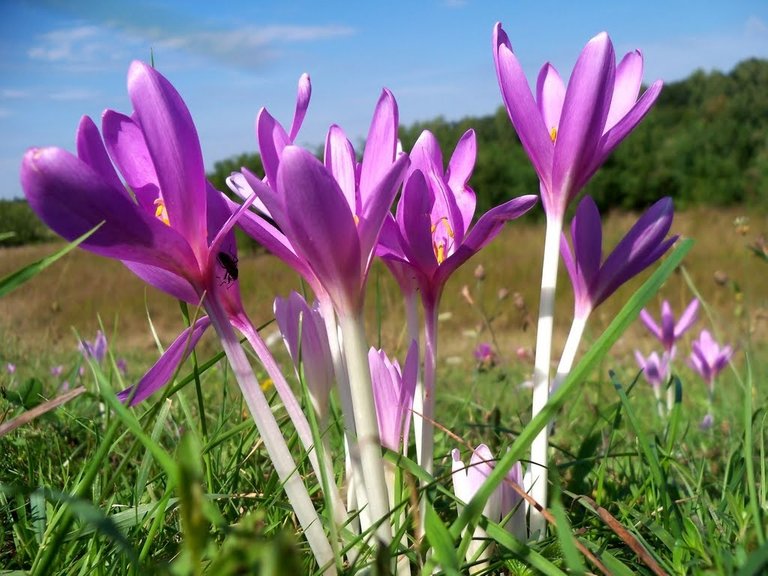
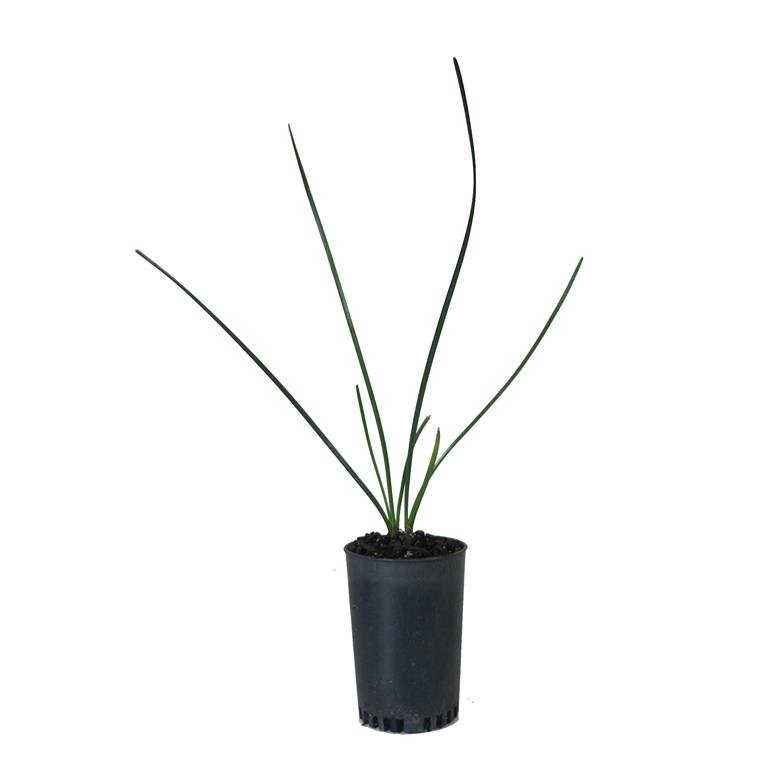
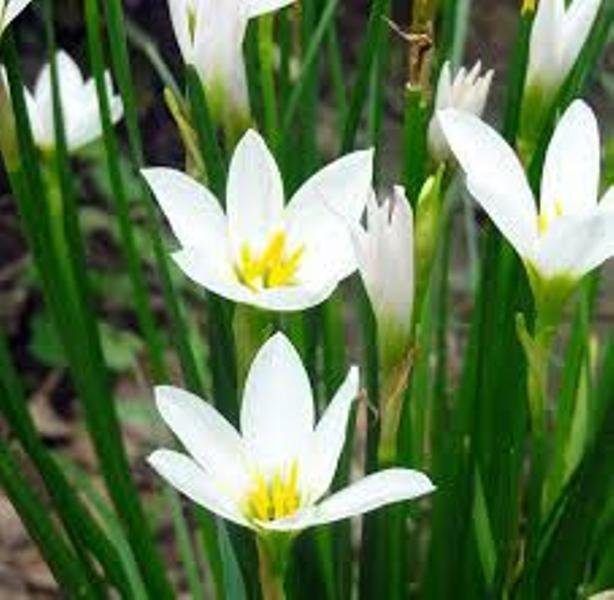
CrocusBotanical Name:Colchicum autumnale
Plant size:5 – 10cm
Pot size:40mm pot.
Description:Autumn crocus are in the Iris family.
They adapt to cool climates and can survive severe frosts. Colchicums are sometimes known as naked ladies because, like amaryllis, the stems come up from bare ground in autumn and produce the flowers. The broad, fleshy leaves usually do not appear until the following spring. They have mauve, narrow-petalled flowers.
Uses:Warning: All parts of the Autumn Crocus are poisonous. Colchicums can be planted in part shade under deciduous trees, or near the front of beds where the flowers can easily be seen. Plant corms in late summer. They like rich, well-drained soils and need plenty of moisture during the growing period, particularly if they have been planted in full sun.
Thanks for the information
100% like and resteem
The autumn crocus or meadow saffron is a member of the lily family.
The autumn crocus has a long history as a poison.
Of course, when growing autumn crocus in the garden, its medicinal properties are not favored but rather the delightful blooms.
The colorful blooms of the autumn crocus initially spring from the earth without any accompanying foliage.
dear body this is really amazing photography your photography is very challenging you can challenge with anyone and you are a talented writer you are right is very valuable for everybody thanks for sharing
I saw a very similar type of leaf and plant in my country, but I have never seen this flower in my country! It looks so beautiful and pretty amazing! Nice description about "Autumn Crocus"!@ctrl-alt-nwo,
Cheers~
Hiii @ctrl-alt-nwo,
I often visited your posts and You always shared beautiful flowers of different categories and their details. which are very informative for us, because many of us including me read and know through your articles of different flowers first time and never heard about them before. You are real Plant and flower Lover.

Flowers always represent Love & Peace indeed so obviously I love them. I also appreciate your efforts and my support always for you. now in future i try my best to visit your every post and gain some knowledge of flowers. Stay Blessed and Take care My friend.
I collect one picture from google.